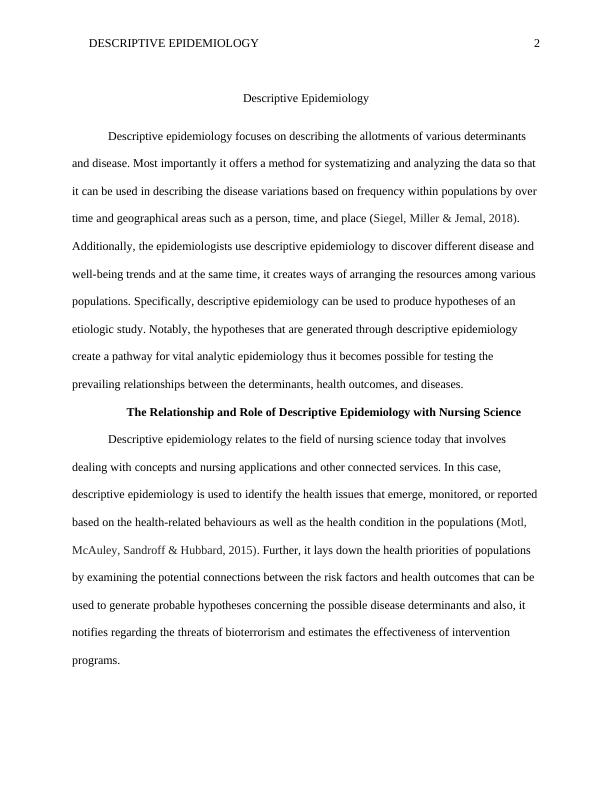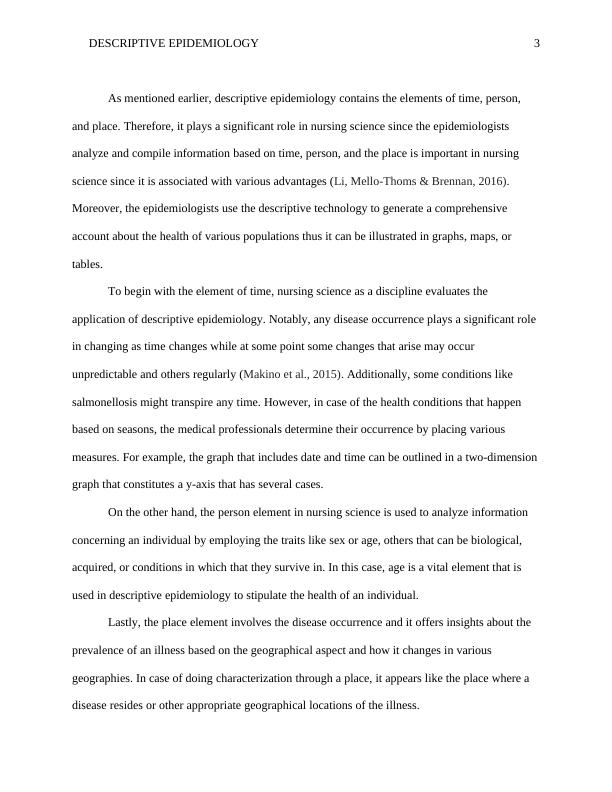Descriptive Epidemiology
Critical appraisal of practice guidelines by ESICM for early nutrition in critically ill patients.
8 Pages1978 Words91 Views
Added on 2022-11-26
About This Document
Descriptive epidemiology focuses on describing the allotments of various determinants and disease. Most importantly it offers a method for systematizing and analyzing the data so that it can be used in describing the disease variations based on frequency within populations by over time and geographical areas such as a person, time, and place.
Descriptive Epidemiology
Critical appraisal of practice guidelines by ESICM for early nutrition in critically ill patients.
Added on 2022-11-26
ShareRelated Documents
End of preview
Want to access all the pages? Upload your documents or become a member.
Medical Science Executive Summary 2022
|13
|3457
|19
Epidemiological Approach in Understanding Notions of Causation Strengths of Epidemiologic Approach
|5
|1055
|155
Roles of Epidemiology in the Health Care Industry
|13
|4357
|54
Childhood Obesity Article 2022
|7
|1709
|27
Qualitative Research Methods
|6
|1469
|99
ASSIGNMENT ON SURVEILLANCE HOMEWORK.
|10
|2160
|17



